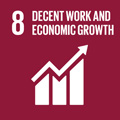- Docente: Stefania Mignani
- Credits: 7
- SSD: SECS-S/01
- Language: Italian
- Teaching Mode: In-person learning (entirely or partially)
- Campus: Bologna
- Corso: First cycle degree programme (L) in International Development and Cooperation (cod. 8890)
-
from Sep 15, 2025 to Nov 17, 2025
Learning outcomes
The course aims to offer students the basic tools for a quantitative reading of economic and social phenomena At the end of the course the students know fundamental concepts of statistics useful for the analysis of simple datasets. In particular, students: -will acquire knowledge of the basic concepts of statistical methodology, both as regards the collection phase and that of data analysis and will be able to carry on a data analysis through the use of a personal computer.
Course contents
DESCRIPTIVE STATISTICS TOOLS: Types of variables. Statistical units, population and sample. Data collection and organization. Data matrices and frequency distributions. Graphical representations. Mean values: mode, median, quartiles, arithmetic mean. Main variability measures and concentration. Statistical indices. Introduction to bivariate analysis. The relationship among two variables: association. The relationship among two variables: covariance and linear correlation. The simple linear regression model.
PROBABILITY: random events and sample space. Axioms of probability. Conditional probability. Density and probability functions of a random variable; expected value and variance of a random variable. Bernoulli and Binomial distributions. Normal distribution and t-Student distribution.
Readings/Bibliography
S. Borra, A. Di Ciaccio. Statistica – metodologie per le scienze economiche e sociali, quarta edizione, McGraw-Hill, Milano, 2021
Lessons on Virtuale
Teaching methods
Il corso prevede lezioni frontali su contenuti metodologici ed esempi sui dati dell'uso degli strumenti presentati.
Sono previste durante il periodo di lezione anche esercitazioni che serviranno come riferimento per la prova. Verranno fissate via via all'interno dell'orario delle lezioni.
Le esercitazioni, tenute dal docente e dal tutor, saranno anche registrate e rese fruibili su Virtuale. La partecipazione a queste attività, anche se non obbligatoria, è vivamente consigliata per risolvere dubbi e problematiche sugli argomenti del corso.
La discussione in aula sui metodi presentati e sulle applicazioni è un momento importante di interazione e di arricchimento per il raggiungimento degli obiettivi formativi del corso.
Assessment methods
The exam (for both attending and non-attending students) consists of a 75-minute written test and includes 20 questions: 8 multiple-choice questions, which may be theoretical or involve solving exercises, and 12 open-ended questions that require the resolution of exercises.
The total score is 32 points, distributed according to content between multiple-choice questions (maximum of 8 points) and open-ended questions (maximum of 24 points). There is no penalty for incorrect answers.
For the exam, the use of a scientific calculator is strongly recommended. Consultation of the formula sheet uploaded to VIRTUALE is allowed, provided it is printed and contains no additional notes; this is the only material that may be consulted during the exam. No other types of notes are permitted.
Registration on Almaesami is mandatory in order to take the exam. Students who have not registered within the deadline will not be admitted.
Skipping exam sessions is not allowed under any circumstances.
Teaching tools
slides, exercises and data
There will practical acitivities ttah will be recorded
Office hours
See the website of Stefania Mignani
SDGs




This teaching activity contributes to the achievement of the Sustainable Development Goals of the UN 2030 Agenda.
